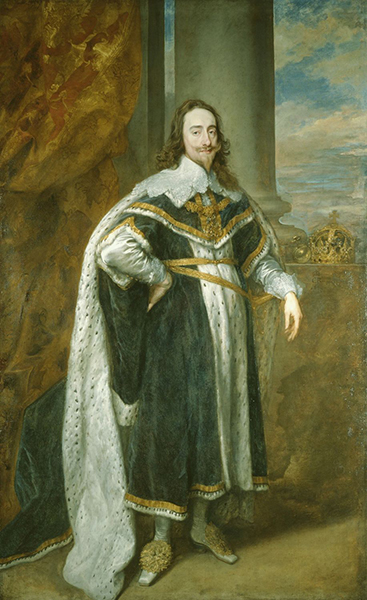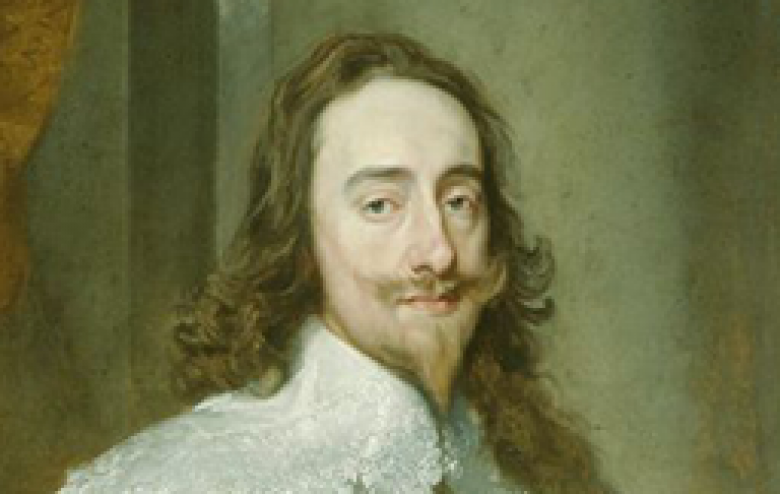3rd June 2018
On this day in 1647, Charles I was removed from Holdenby House by George Joyce and 500 men from the New Model Army. He had been under house arrest forseveral months, and his capture had seen the end of the first English Civil War, although it was to be a short-lived peace.
Charles was the son of James I and the grandson of Mary, Queen of Scots. Like his father, Charles was a firm believer in the divine right of kings, and felt he should govern his realm as he alone saw fit. This lead to clashes with Parliament from the very start of his rule. At one point, Charles dissolved parliament and ruled alone for eleven years. The public disliked his marriage to the Catholic Henrietta Maria of France – and his schemes and policies to raise funds meant Charles became more and more unpopular. When he attempted to introduce policies in the Scottish Church to bring it more in line with the Church of England, the Scots refused and retaliated by invading England. This forced Charles to call a Parliament in 1640 – as only Parliament could legally collect taxes and Charles needed funds for the war.
Parliament refused to do anything unless the king addressed their grievances. But later that same year Charles needed Parliament again, and this time they demanded concessions from him on government policy, and began dismantling his Personal Rule.
Tensions remained high, coming to a head when Charles entered the House of Commons with an armed guard to arrest five members for treason. He believed they had encouraged the Scots to invade England. But they had been warned and had fled, and those still in the House refused to reveal their location.
This failure was a catalyst for the start of the Civil War. By entering the House of Commons, Charles had breached parliamentary privilege. For many, it confirmed fears of a Catholic plot against Parliament, and Henrietta Maria took much of the blame for the arrest attempts. Parliament took control of London, and Charles quickly left. Both sides began to arm themselves, and and in August 1642, Charles raised his standard at Nottingham – marking the beginning of the Civil War.
The war lasted several years, and in 1645 Charles and his royalist supporters were soundly defeated by Parliament’s army. Charles had retreated to Oxford, but knew both his options and resources were limited. He decided to escape while Oxford was under siege. Using a large part of his own army as a diversion and dressing himself as a groom, Charles left Oxford and made his way to a Scottish Presbyterian garrison – feeling they were offering him the best terms. The Scots took Charles north to Newcastle upon Tyne while they negotiated with the English Parliament. He was returned in exchange for £100,000, and brought to Holdenby House in Northamptonshire.
In the months Charles was held there under house arrest, relations broke down between the two major factions of Parliament: the Presbyterians and the Independents – who controlled the New Model Army. The Presbyterians intended to break up the New Model Army and remove leading Independents such as Oliver Cromwell.
The New Model Army, knowing that whoever controlled the captive king held the upper hand, made their move. When cornet George Joyce arrived at Holdenby, he demanded Charles leave with him. His orders seem to have been just to secure and take control of the house, but Joyce believed the garrison commander – who supported the Presbyterian leader – had gone for support, and acted decisively in response.
Charles agreed to leave with Joyce, although upon seeing Joyce’s men, Charles pressed the cornet to show him the commission which gave him his orders.
Joyce is said to have gestured to his 500 horsemen and told Charles, “This is my commission! It is behind me.”
Charles could hardly argue with that, and apparently responded by saying, “It is as fair a commission, and as well written a commission as I have seen in my life.” He left with no further trouble, perhaps seeing this as an opportunity to exploit the widening divisions between the two factions of Parliament.


